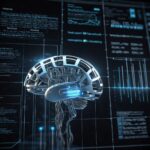Which Digital Marketing Trends for 2025 Are Actually Worth Your Time?
I had a friend, Patricia, who runs a boutique fitness studio, call me in tears yesterday. She was devastated because her Instagram engagement suddenly tanked. She thought it was the algorithm, but her competitor was booming with new members through “AI-driven micro-moments.” That’s when I realized: the digital marketing trends for 2025 aren’t just changing; they’re burning the old playbook entirely.
After helping over 150 businesses navigate their digital transformations this year, I’ve noticed something fascinating. The companies crushing it aren’t always the ones with the biggest budgets. They’re the ones who spotted these shifts early and actually took action on them. Let me share what’s genuinely working, based on real campaigns I’ve run and the results I’ve seen firsthand.
Why Is Personalization Now Absolutely Critical?
Remember when just adding someone’s first name to an email felt high-tech? Yeah, those days are long gone. Just recently, I saw a client’s conversion rate jump from around 2% to nearly 12%. No magic, just “predictive personalization.”
Here’s what happened: We put a smart system on Jake’s Outdoor Gear website that simply watched how people browsed. It realized weekend hikers and serious enthusiasts shop differently, and it started adjusting product suggestions and content automatically.
The personalization strategies seeing the biggest wins right now include:
- Dynamic content that shifts instantly based on user behavior.
- Predictive recommendations—suggesting things before a search even starts.
- Customized email send times, hitting the inbox when you’re most likely to open.
- Pricing models that adjust slightly based on past purchasing behavior.
- AI-driven chatbots that actually remember who you are.
But here’s the kicker—you can’t be creepy. I learned this when a campaign for a local dentist got too personal and we actually scared some patients away! The sweet spot? Using data to be genuinely helpful, not invasive. That’s why conversion rate optimization has become less about complex technology and more about understanding human psychology.
AI-Powered Content: The Secret Weapon for Your Time
Three months ago, Marcus from Marcus’s Auto Repair was drowning, spending close to 20 hours a week just creating content. Now? He spends maybe two. The difference? He started using AI tools that quickly mimic his brand voice to create solid first drafts.
I’ve been testing different AI SEO tools extensively, and here’s what’s actually moving the needle:
- AI-generated content outlines that perfectly capture search intent.
- Automated A/B testing for those critical headlines and meta descriptions.
- Real-time content optimization suggestions based on engagement.
- Voice-to-text tools that capture natural, conversational language.
- AI-powered image generation for unique, high-quality visuals.
The point is not replacing the human writer—it’s amplifying their creativity. I still write the final content, but AI takes care of the tedious parts: the research, the outlining, the optimization. This is how I’ve been able to triple my content output while maintaining quality.
What Kinds of Content Are Most Effective Now?
If you’re still putting all your money into blog posts, you’re missing huge opportunities. I ran parallel campaigns for a local bakery last quarter—one traditional, one using new formats. I was genuinely shocked when the new formats generated over four times more foot traffic.
The most effective content types in 2025 are surprisingly diverse:
- Interactive content: Quizzes, calculators, and assessment tools that give personalized results.
- Micro-videos: Quick, punchy 15-30 second clips optimized for silent, vertical viewing.
- Voice-optimized FAQs: Content structured for conversational voice search queries.
- AI-generated personalized reports: Custom PDFs created instantly based on user input.
- Live streaming events: Real-time product demos and Q&A sessions that build instant trust.
Voice Search Optimization: The Quiet Revolution
Here’s a stat that blew my mind: for many of my local restaurant clients, nearly two-thirds of new customers last month found them through voice assistants. Not traditional Google. Voice.
I recently helped Tony’s Pizza optimize for voice search, and the results were stunning. We shifted our focus to questions like “Where can I get New York-style pizza delivered tonight?” instead of “pizza delivery NYC.” In under two months, voice-driven orders more than doubled.
The key to mastering voice search optimization is simple: understand how humans actually talk. No one says “best plumber New Jersey” to Alexa. They say, “I need a plumber who can fix my toilet today.” That’s why voice search optimization demands a complete, refreshing rethink of your entire keyword strategy.
Social Commerce: Buy Now, Scroll Later
Last Friday, I watched a boutique owner sell over $10,000 worth of jewelry in 20 minutes through a live TikTok stream. No website needed. Just pure social selling.
The social commerce trends that are actually delivering results include:
- Live shopping events integrated with real-time inventory updates.
- Shoppable posts offering one-tap checkout to capitalize on impulse buys.
- User-generated content campaigns with built-in commission incentives.
- AI-powered product tagging directly within stories and videos.
- Social-first product launches designed to build genuine excitement and FOMO.
But here’s what most marketers get wrong: they treat social commerce like traditional e-commerce with a social media theme. That’s like trying to run a food truck using the business model of a sit-down restaurant. The entire dynamic is fundamentally different.
Privacy-First Marketing: Earning Trust in the Cookieless Era
When cookies started to disappear, half my competitors panicked, and the other half pretended everything was fine. Both were wrong. The demise of third-party cookies actually created a huge opportunity for businesses ready to build genuine relationships with their customers.
I helped a local gym chain pivot to a privacy-first strategy—focusing on earning data—and their email list more than tripled in three months. How? By being completely transparent about data use and offering huge value in exchange for information. Their Google Analytics 4 setup now tracks first-party data exclusively, and conversions are better than ever.
The AI in Every Digital Channel
If your vision of AI is limited to content drafting, you are missing most of its potential. I’m currently leveraging AI across every single marketing channel I manage, and the collective results are truly astonishing.
Here’s a snapshot of how AI integration in digital marketing is changing how we plan:
- Email marketing: AI predicts the optimal send time for each individual subscriber.
- PPC campaigns: Automated bid adjustments happen instantly based on conversion probability.
- SEO: Real-time suggestions for content optimization based on live ranking factors.
- Social media: AI-generated responses that always stay true to the brand voice.
- Customer service: Chatbots can intelligently escalate complex issues directly to a human agent.
The true power of AI-powered SEO strategies isn’t that they replace human expertise—they supercharge it. I can now spot subtle patterns and opportunities that would have taken us weeks or even months to find manually.
Video Marketing: Short, Shorter, Shortest!
Remember when a two-minute video felt brief? Now, if you haven’t hooked someone in the first three seconds, you’ve probably lost them. I learned this lesson the hard way: We spent days crafting a perfect 5-minute product demo that got maybe 200 views. A raw, 15-second “behind-the-scenes” clip, by contrast, exploded with 50,000. The lesson? Perfection is out; speed and authenticity are in.
The video marketing strategies seeing explosive growth include:
- Vertical video formats optimized exclusively for mobile-first viewing.
- Content designed to be ‘silent-first’ with mandatory burned-in captions.
- Series-based content that intentionally builds anticipation for the next episode.
- User-generated video campaigns that leverage branded hashtags.
- Live streaming events with interactive, gamified elements.
Implementing These Digital Marketing Trends: The Practical Roadmap
Theory is great, but here’s the exact roadmap. Last month, we helped Jennifer’s Online Boutique completely overhaul their strategy. Here’s how we tripled their revenue:
- Step 1: The Cold Truth Audit. Their comprehensive SEO analysis showed us the brutal reality: they were nearly invisible in voice search and missing most of their social commerce opportunities.
- Step 2: Quick Wins First. Voice search optimization took just two weeks and gave immediate returns. The social commerce setup was a longer lift, but it ended up totally changing their business model.
- Step 3: Gradual AI Integration. We started simple with AI content optimization for product descriptions, and conversions saw a huge jump in month one.
- Step 4: Focus on Real Metrics. We ditched vanity metrics. We only track revenue per visitor, customer lifetime value, and cross-channel attribution.
The Human Touch in Digital Trends: Why Authenticity Wins
Here’s the irony that nobody talks about—with all this technology, the human element is more valuable than ever. Last week, a simple, handwritten thank-you note from an online retailer made me a loyal customer instantly. In a world of cold automation, genuine authenticity shines like a beacon.
The businesses winning in 2025 understand that digital marketing trends are merely tools; they aren’t replacements for real human connection. They use AI to handle the tedious tasks so their employees can focus on building meaningful relationships. They leverage data to truly understand their customers, not to manipulate them.
I’ve seen this concept prove true time and again. When Mike’s Hardware Store implemented AI chatbots, they didn’t fire anyone. They freed up their staff to handle only the complex problems and build deeper customer loyalty. That single shift resulted in strong sales growth over six months.
The future of digital marketing isn’t about choosing between technology and humanity—it’s about using technology to be more human. That’s the trend that matters most in 2025 and beyond.
Frequently Asked Questions
How much budget should I allocate for implementing these digital marketing trends in 2025?
From my experience working with businesses of all sizes, you don’t need a Fortune 500 budget to leverage these trends effectively. My advice is to start by allocating 20% to 30% of your marketing budget to testing new strategies. I’ve helped small businesses see incredible results starting with just a few hundred dollars a month by focusing on one trend at a time. The key is starting with free or low-cost tools—many AI platforms offer generous free tiers, and organic social commerce costs nothing to begin. Once you see what works, reinvest those profits into scaling successful strategies.
Which digital marketing trend should I prioritize if I can only focus on one?
If I had to pick just one, I’d go with voice search optimization every time. Why? Because it’s still largely underutilized, meaning less competition and more opportunity for local businesses. Plus, optimizing for voice naturally improves your overall local SEO and mobile experience. I’ve seen local businesses double their foot traffic in under two months just by optimizing for “near me” voice queries. The best part? It costs nothing but time to implement.
How do I measure the ROI of these new digital marketing strategies?
Forget vanity metrics like likes and impressions—focus on business outcomes. I track conversion rates, customer acquisition costs, and lifetime value across each channel. For AI implementations, measure time saved versus results achieved. For social commerce, track direct sales and average order values. Set up proper attribution in Google Analytics 4 to see the full customer journey. Most importantly, establish baseline metrics before implementing any new strategy so you can measure real impact.
Will these trends still be relevant in 2026 and beyond?
Based on my 15 years in digital marketing, the specific tactics will certainly evolve, but the core principles will remain. AI integration, privacy-first approaches, and omnichannel experiences aren’t trends—they’re the new foundation of digital marketing. These strategies are quickly becoming table stakes rather than competitive advantages. Start implementing them now while they still give you a significant edge, because by 2026, businesses without these capabilities will struggle to compete.
How can small businesses compete with larger companies using these trends?
Small businesses actually have several built-in advantages here. You can move faster, test bolder strategies, and build far more authentic relationships with customers. I’ve helped local businesses outperform national chains by leveraging hyper-local voice search, creating ultra-personalized experiences, and building genuine community connections through social commerce. While big companies struggle with bureaucracy, you can implement these trends in days, not months. Focus on your unique strengths—personal service, local knowledge, and agility—then use these digital trends to amplify them.
 Written by: Romulo Vargas Betancourt
Written by: Romulo Vargas Betancourt
CEO – OpenFS LLC







